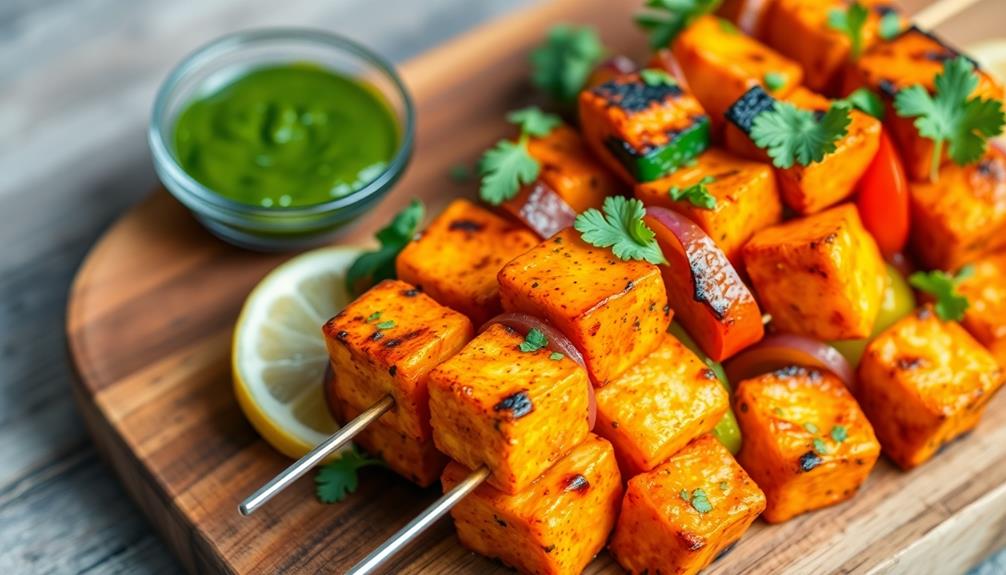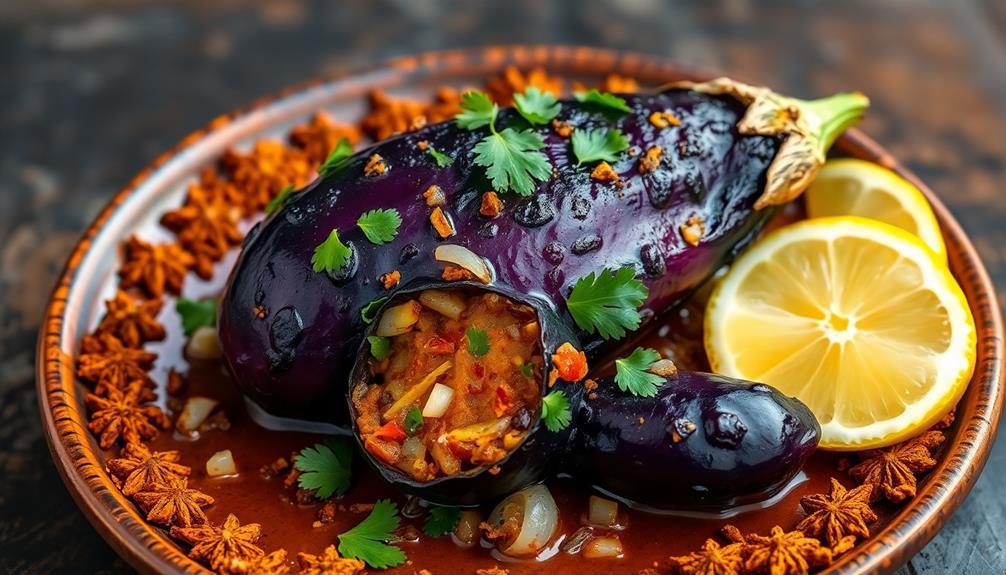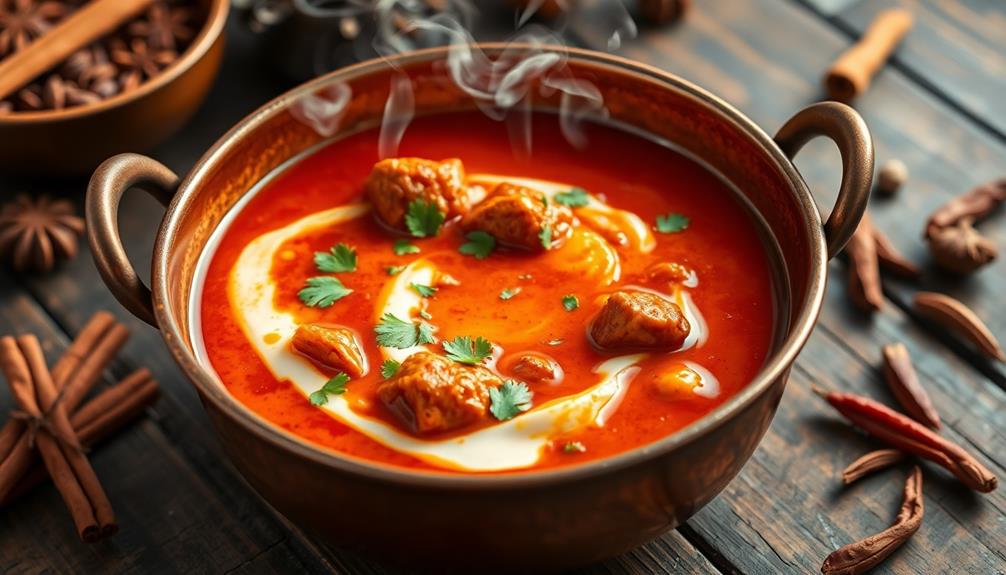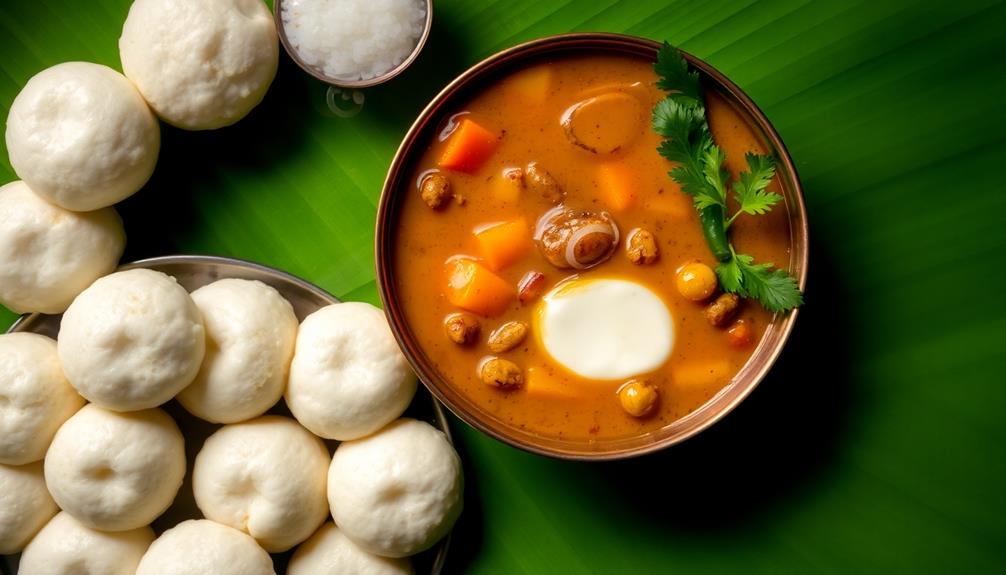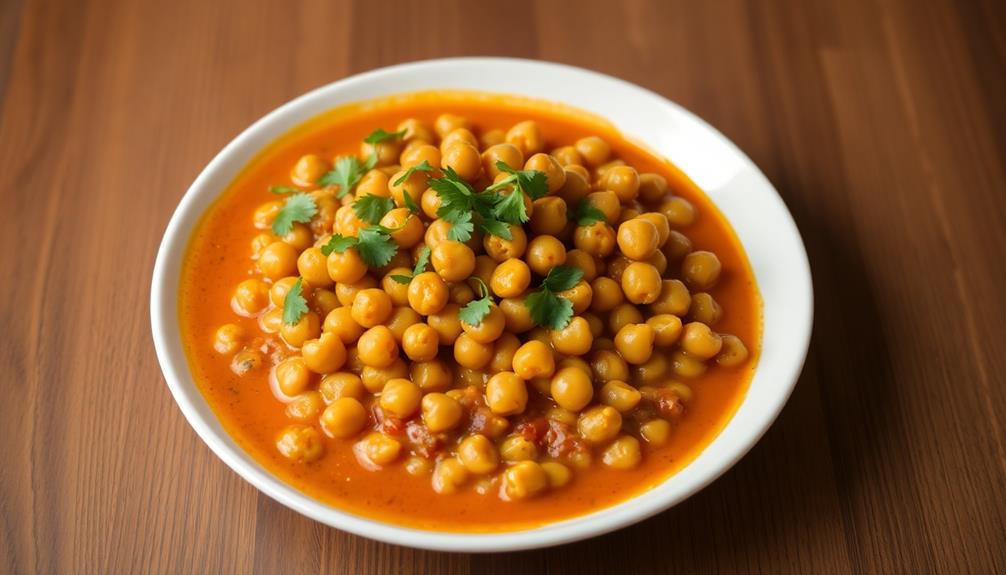You'll love paneer tikka, a popular Indian appetizer that features marinated cubes of paneer cheese grilled to perfection with vegetables and aromatic spices. It's a delicious vegetarian dish with roots in ancient Indian and Central Asian cuisine. To make it, you'll marinate paneer in a flavorful yogurt mixture, thread it onto skewers with colorful veggies, and grill until golden-brown. The result is a tender, juicy dish with a crispy exterior that's bursting with flavor. Serve it with mint chutney and warm naan for a truly satisfying meal. There's so much more to discover about this tasty treat!
Key Takeaways
- Paneer tikka is a popular Indian appetizer featuring marinated and grilled cubes of paneer cheese with vegetables.
- The dish originates from Punjab and combines Indian flavors with Central Asian grilling techniques.
- Key ingredients include paneer, yogurt, spices, and vegetables like bell peppers and onions.
- Marination is crucial for flavor absorption, typically lasting 30 minutes to 4 hours before grilling.
- Paneer tikka is often served with mint chutney, tamarind chutney, and naan bread as accompaniments.
History
Two distinct culinary traditions converged to create paneer tikka. You'll find its roots in both ancient Indian cuisine and the cooking methods of Central Asia. Paneer, a fresh cheese, has been a staple in Indian kitchens for centuries. It's believed to have originated in the Punjab region, where dairy farming was widespread.
The 'tikka' part of the dish comes from the Turkic word 'tikkü', meaning 'bits' or 'pieces'. This cooking style was introduced to India by the Mughals, who ruled much of the subcontinent from the 16th to the 19th century. They brought with them the practice of grilling marinated meat on skewers over open fires.
As these culinary traditions mixed, clever cooks replaced meat with paneer, creating a vegetarian version of the popular tikka dishes. This fusion happened sometime in the 20th century, though the exact date isn't known.
You'll now find paneer tikka in restaurants and homes across India and around the world. It's a delicious example of how food evolves, blending different cultures and techniques to create something new and exciting.
Recipe
Paneer Tikka is a popular Indian vegetarian dish that combines the creamy texture of paneer (Indian cottage cheese) with the bold flavors of aromatic spices. This grilled appetizer isn't only delicious but also a great source of protein, making it a favorite among vegetarians and meat-eaters alike.
Preparing Paneer Tikka at home is surprisingly simple and allows you to control the level of spiciness and flavors to suit your taste. The key to a perfect Paneer Tikka lies in marinating the cheese cubes long enough to absorb the flavors and achieving the right balance of tanginess from yogurt and heat from spices.
- 400g paneer, cut into 1-inch cubes
- 1 cup plain yogurt
- 2 tbsp ginger-garlic paste
- 2 tsp garam masala
- 1 tsp turmeric powder
- 1 tsp red chili powder
- 1 tsp cumin powder
- 2 tbsp lemon juice
- 2 tbsp oil
- Salt to taste
- 1 large onion, cut into chunks
- 1 large bell pepper, cut into chunks
To prepare Paneer Tikka, start by mixing all the marinade ingredients in a large bowl. Add the paneer cubes, onion, and bell pepper chunks to the marinade and gently toss to coat evenly. Cover and refrigerate for at least 2 hours or overnight for best results.
Preheat your oven to 200°C (400°F). Thread the marinated paneer and vegetables onto skewers, leaving space between each piece. Place the skewers on a baking sheet lined with parchment paper and bake for 15-20 minutes, turning halfway through, until the edges are slightly charred and the paneer is heated through. Alternatively, you can grill the skewers on a barbecue or stovetop grill pan for a more authentic smoky flavor.
For the best results, use firm, fresh paneer and pat it dry before marinating to prevent excess moisture. If you're short on time, you can marinate the paneer for as little as 30 minutes, but longer marination will yield more flavorful results.
To prevent the paneer from breaking, handle it gently and avoid overcooking. Serve the Paneer Tikka hot, garnished with lemon wedges and a sprinkle of chaat masala for an extra burst of flavor.
Cooking Steps
Get ready to create a mouthwatering paneer tikka with these simple steps.
You'll start by marinating the paneer in aromatic spices, then thread it onto skewers for easy grilling.
As you cook the skewers over high heat, don't forget to brush them with oil and serve your delicious creation with chutney and naan.
Step 1. Marinate Paneer in Spices
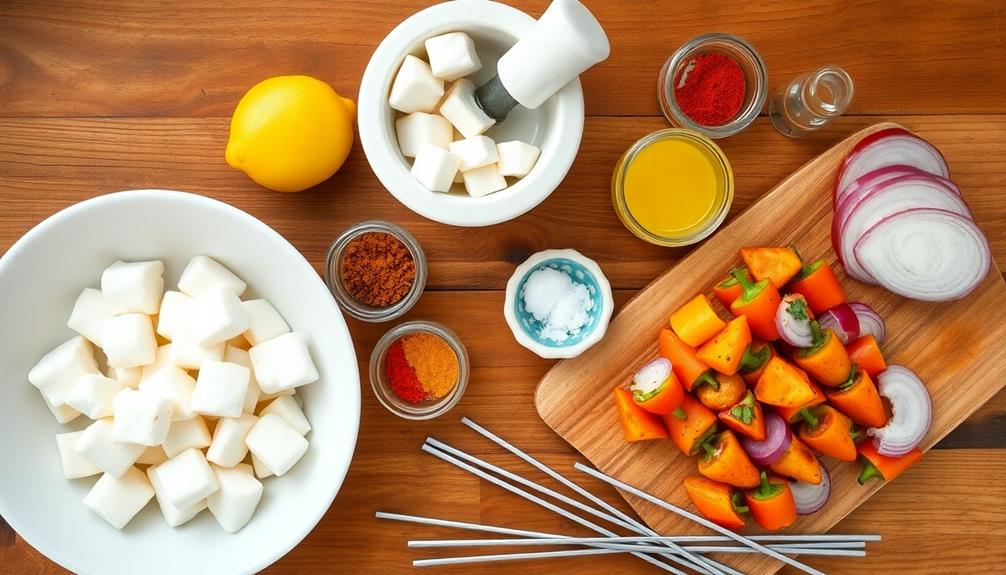
After preparing the paneer, it's time to infuse it with aromatic spices. You'll want to create a flavorful marinade that'll make your taste buds dance!
Start by mixing yogurt, lemon juice, and a splash of oil in a large bowl. This creamy base will help the spices stick to the paneer cubes.
Now, let's add the spices! Sprinkle in some garam masala, turmeric, cumin, and coriander powder. Don't forget to include some minced garlic and ginger for an extra kick. Add a pinch of salt and red chili powder if you like it spicy.
Mix everything well until you've got a vibrant, fragrant paste.
It's time to coat your paneer cubes! Gently fold them into the marinade, making sure each piece is well-covered.
You'll want to let the paneer soak up all those yummy flavors, so pop the bowl in the fridge for at least 30 minutes. If you've got more time, let it marinate for up to 4 hours – the longer, the better!
Your paneer will be bursting with flavor and ready for the next step in your tikka adventure.
Step 2. Thread Paneer Onto Skewers

Now that your paneer has absorbed all those delicious flavors, it's time to prepare it for cooking. Grab your skewers and let's get threading! You'll want to use metal skewers if you have them, but wooden ones work too. If you're using wooden skewers, soak them in water for about 30 minutes first to prevent burning.
Take each marinated paneer cube and gently slide it onto the skewer. Don't pack them too tightly; leave a little space between each piece so the heat can circulate. As you thread, try alternating the paneer with bite-sized pieces of bell peppers and onions. This adds color and extra flavor to your tikka.
Keep going until you've used up all your paneer and veggies. You'll probably end up with 4-6 skewers, depending on their size.
Once you've finished threading, give each skewer a quick once-over to make sure everything's secure. If any pieces feel loose, simply adjust them.
Now your paneer tikka is ready for the grill or oven. Doesn't it look appetizing already?
Step 3. Grill Skewers Over High Heat
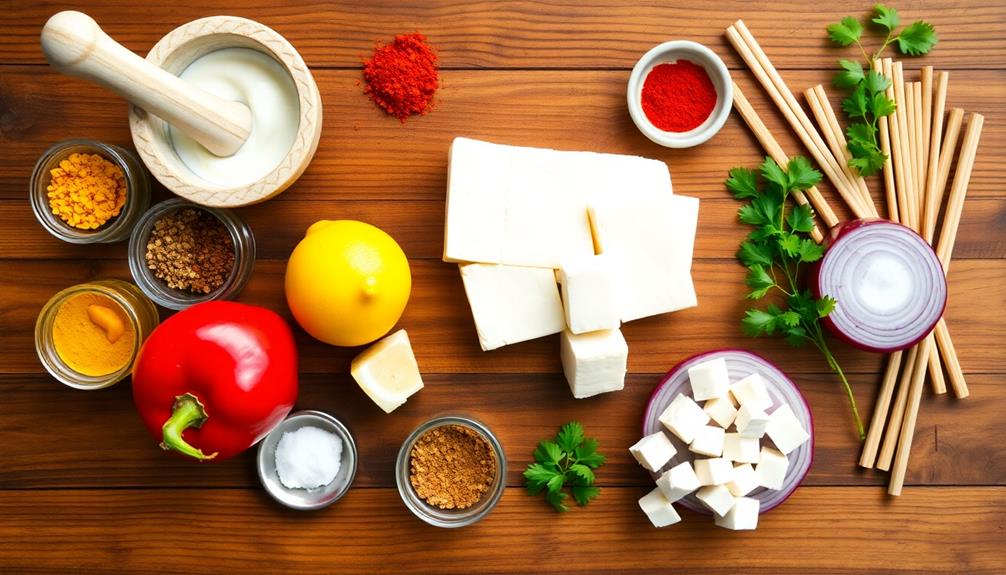
The sizzle of paneer hitting the grill signals the start of the cooking process. You're now ready to transform those marinated skewers into a delicious meal. Place your skewers on a preheated grill over high heat. Make sure there's enough space between them for even cooking.
Keep a close eye on your paneer as it cooks. You'll want to turn the skewers every 2-3 minutes to ensure all sides get that perfect char. The paneer should develop beautiful grill marks and a golden-brown color.
Don't worry if you hear a bit of sputtering – that's just the marinade caramelizing on the grill.
As you're grilling, brush the skewers with any leftover marinade to keep them moist and flavorful. The entire cooking process should take about 8-10 minutes.
You'll know your paneer tikka is ready when it's slightly crispy on the outside but still soft on the inside. The veggies should be tender-crisp with a bit of char.
Once done, remove the skewers from the grill and let them rest for a minute before serving. Enjoy your homemade paneer tikka!
Step 4. Brush With Oil While Grilling
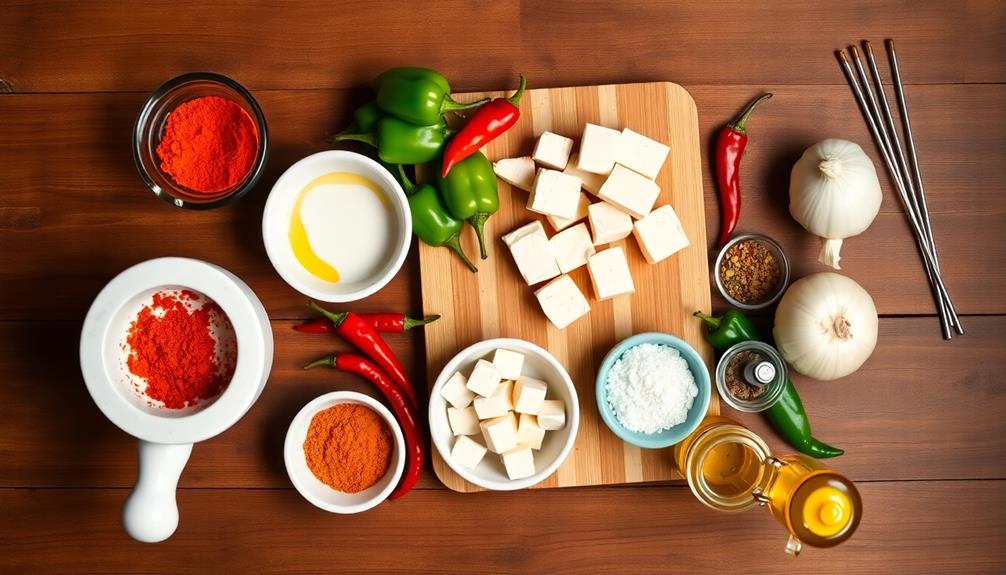
While grilling your paneer tikka, it's crucial to keep the skewers moist and flavorful. You'll want to brush them with oil as they cook. This step helps prevent the paneer and vegetables from drying out and sticking to the grill. It also adds a nice sheen to your finished dish!
Grab a small bowl and pour in some vegetable oil. You can use a regular cooking brush or a special silicone basting brush for this job. As your skewers sizzle on the grill, gently brush the oil over the paneer and veggies every few minutes.
Don't forget to turn the skewers as you go, making sure all sides get equal attention and oil coverage. This oiling technique will help create a beautiful golden-brown color on your paneer tikka.
It'll also keep the cheese tender and juicy on the inside while developing a slightly crispy exterior. Remember, you don't need to drench the skewers in oil – a light coating is just right.
Your efforts will pay off when you bite into perfectly grilled, mouthwatering paneer tikka that's bursting with flavor!
Step 5. Serve With Chutney and Naan
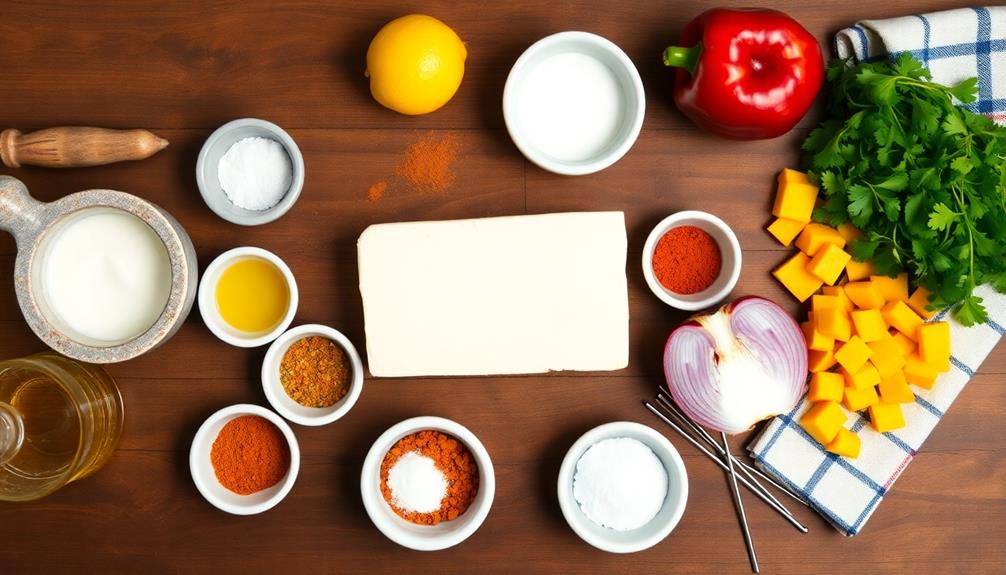
Having grilled your paneer tikka to perfection, it's time to focus on serving this delicious dish. You'll want to pair it with some tasty sides to complete your meal.
Start by preparing a fresh mint chutney. It's super easy to make and adds a burst of flavor to your tikka. Simply blend mint leaves, cilantro, green chilies, lemon juice, and a pinch of salt in a food processor. If you prefer, you can also serve a sweet tamarind chutney for a tangy twist.
Now, let's talk about the naan. You can either make it at home or buy it from your local store. Warm it up on a skillet or in the oven before serving. It's perfect for scooping up those juicy paneer pieces!
Don't forget to arrange some lemon wedges and sliced onions on the side. They'll add a nice zing to each bite.
When you're ready to serve, place your paneer tikka on a large platter. Surround it with the warm naan and small bowls of chutney. Your guests will love the colorful presentation and mouthwatering aromas!
Final Thoughts
Many cooks find paneer tikka to be a delightful addition to their culinary repertoire.
It's a versatile dish that you can easily adapt to suit your taste preferences. Whether you're a vegetarian or just looking to explore new flavors, paneer tikka offers a delicious and satisfying option.
As you've learned, making paneer tikka at home isn't as daunting as it might seem. With a few key ingredients and some simple techniques, you can create a restaurant-quality dish in your own kitchen.
Remember to marinate the paneer for the best flavor, and don't be afraid to experiment with different spices and herbs.
Serving paneer tikka with chutney and naan makes for a complete meal that's sure to impress your family and friends. To round out the meal, consider adding a side of creamy spinach and cheese. This rich and flavorful side dish pairs perfectly with the bold flavors of the paneer tikka and the tangy sweetness of the chutney. And of course, don’t forget to have plenty of naan on hand to scoop up every last bit of the delicious mixture. Your guests will be delighted with this well-balanced and satisfying Indian meal.
It's a great way to introduce Indian cuisine to those who might be unfamiliar with it.
Don't forget to enjoy the process of cooking as much as the final product. With practice, you'll become more confident in your ability to prepare this classic dish.
Frequently Asked Questions
Can Paneer Tikka Be Made Without a Tandoor or Grill?
Yes, you can make it without a tandoor or grill. You'll need to use your oven's broiler or a stovetop pan. Marinate the paneer, then cook it under high heat until it's charred and cooked through.
Is Paneer Tikka Suitable for Vegetarians and Gluten-Free Diets?
Yes, you'll find paneer tikka is perfect for vegetarians as it's made with cheese. It's also naturally gluten-free, but you'll want to double-check any marinades or sauces to ensure they don't contain gluten ingredients.
How Long Can Leftover Paneer Tikka Be Stored?
You can store leftover paneer tikka in an airtight container for up to 3-4 days in the refrigerator. It's best to consume it within 24-48 hours for optimal taste and texture. Don't freeze it, as it'll affect the quality.
What Are Some Common Side Dishes Served With Paneer Tikka?
You'll often find naan bread, rice, or roti served alongside your dish. Don't forget raita, a cool yogurt-based sauce. For veggies, try some roasted cauliflower or a fresh green salad to balance the meal.
Can Paneer Tikka Be Frozen for Later Consumption?
Yes, you can freeze paneer tikka for later consumption. You'll want to wrap it tightly in plastic wrap or place it in an airtight container. It'll keep for up to 3 months. Thaw and reheat before serving.
